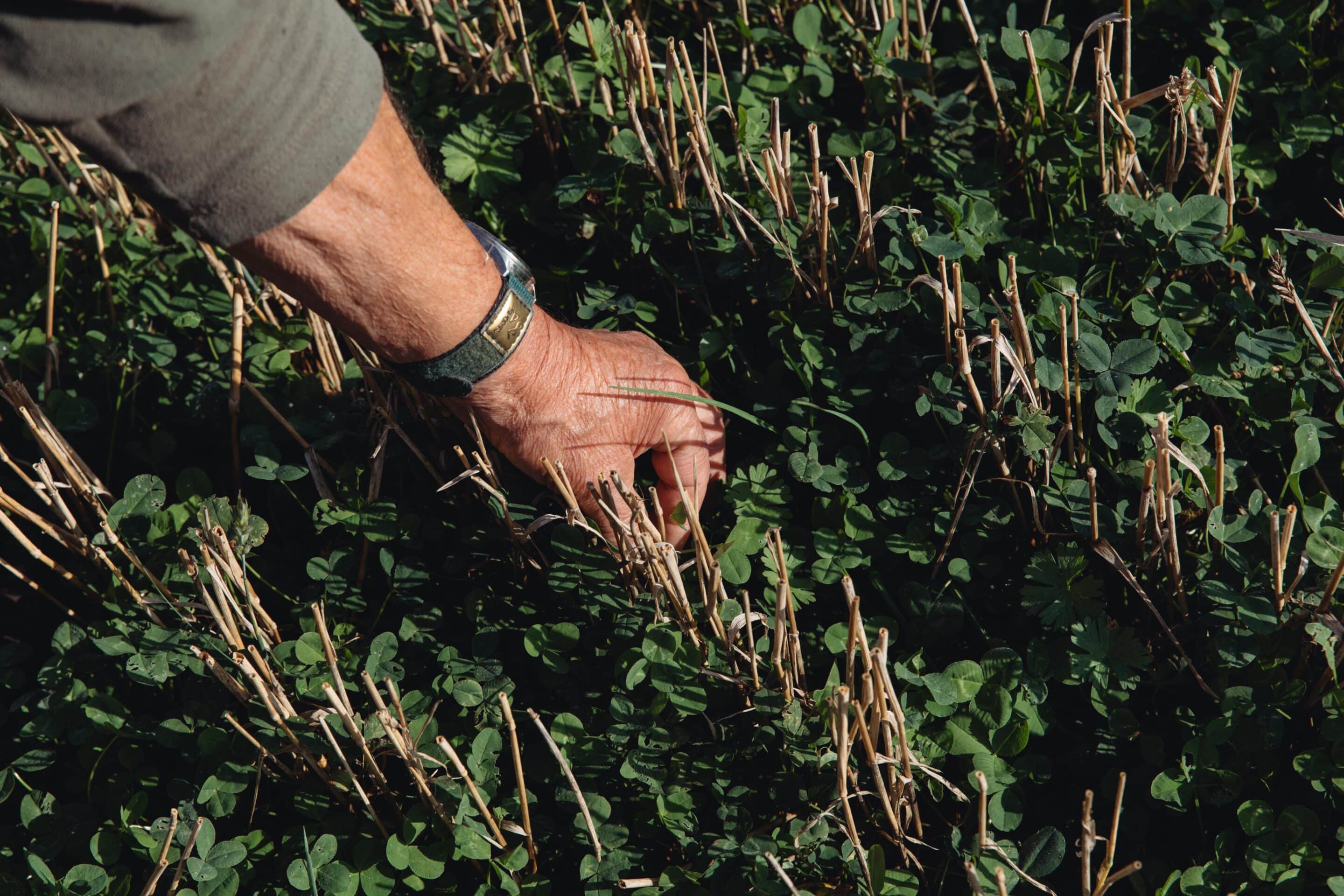- Groundwork
- Market Engagement
- Groundwork
- Market Engagement
Summary of Blaston Estate
Hylton Murray-Philipson of Blaston Estate in Leicestershire has generated measured soil carbon certificates by implementing regenerative farming practices. In the first transaction in 2022, the farm sequestered 6,500 tonnes CO2 and, having deducted on-farm emissions and placed 20% into a buffer pool, sold 5,000 certificates to Respira International.
Respira underwrote the transaction with a guaranteed minimum price and subsequently on-sold the credits to third party buyers including Dash Water, Helical, Howden, Truck East and Weatherby’s Bank. Blaston takes a holistic approach to managing the farm and works closely with Severn Trent Water. Although the nature market focus is on soil carbon, the farm has implemented practices which have co-benefits for overall soil health, biodiversity and water quality. Profitability has increased as applications of artificial N have been reduced.
Farm Profile:
- Location: Leicestershire
- Size of Land: 400 ha
- Tenancy & Ownership: Owner/Occupier
- Nature Market Focus: Soil Carbon
- Interventions: Direct Drilling, Cover Crops, Crop Rotations
- Project Partners: Respira International, Ecometric, Indigro, Fisher German
Acknowledgements
With many thanks their time and insight on this case study:
Hylton Murray-Philipson, farmer and estate manager at Blaston Estate
Respira International
David Wright, CEO, ecometric

Roger Davis, Director & Co-founder, Indigro Limited

Richard Sanders, Farm Consultant, Fisher German

Date published: 19/11/2023
Key Takeaways
- Blaston Estate used Ecometric to conduct the initial baseline assessment and ongoing monitoring. Physical soil sampling was combined with AI remote sensing to produce an accurate measurement of movements in soil carbon.
- Blaston Estate worked closely with Indigro Ltd. a firm of independent agronomists, to develop a farm management plan for improving soil health and increasing soil carbon.
How did Blaston Estate conduct its baseline?
Blaston works as a team. Once Hylton Murray-Philipson, the owner, had set out his vision for improving the health of his soils, Indigro and Fisher German worked on implementation. Guided by Respira, the underwriter of the transaction, the team hired Ecometric to conduct baselining. Ecometric uses Artificial Intelligence to combine on-site soil sampling and lab analysis with remote sensing data. Although comprehensive soil sampling is more expensive than modelling, Ecometric’s methodology was the only approach accepted by underwriter / initial purchaser Respira.
Having completed the third year’s testing and generated the second year’s carbon sale, the project is currently being profiled on the Regen Network platform and will be publicly available for ongoing scrutiny. Continually ground-truthing the remote sensing data through soil testing has increased the accuracy of the AI system to over 90% – key to reducing costs over the longer term. See more about the farm’s engagement with buyers in the case study for Milestone 4.
After settling on Ecometric’s methodology, Blaston had its first comprehensive soil carbon baseline done in 2020. The 2021 round of measurement demonstrated an increase in soil carbon which was then sold as certificates in 2022.

How did Blaston Estate develop its farm management plan?
Murray-Philipson had already worked with agronomy company Indigro for 25 years before tasking them to develop a management plan for the farm which would reverse declines in soil organic matter, restore soil health and increase soil carbon.
Areas which were the most depleted in terms of carbon content were prioritised for intervention. The farm had a mixture of arable fields and permanent grassland. To assess the potential uplift of the arable fields, measurements were also taken on the adjacent permanent pasture. The permanent pasture’s Soil Organic Matter (SOM) content was 8.5% while the arable fields were at 3%. This suggested that the arable fields would have a saturation level of about 8.5% and thus had substantial room for uplift.
Indigro developed a plan based on three key regenerative principles: Minimising soil disturbance; permanently covering the soil with cover crops, and introducing diversity into the system in the form of crop rotations and grass and livestock integration. Learn more about the specific practices employed at Blaston in the case study for Milestone 1.
How does Blaston Estate conduct ongoing monitoring and measurement?
Blaston Estate measures its soil carbon annually using the same methodology it used for its baseline. Indigro remains highly involved in monitoring the condition of the soils and adjusting the farm management plan each year in response to changes in yield, soil carbon and other environmental indicators such as prevalence of blackgrass. In addition to restoring soil health, Murray-Philipson has also established wide field margins to reduce runoff; planted habitat strips for biodiversity and to encourage beneficial insects allowing for zero insecticide use in arable crops; planted 10,000 trees, and introduced agroforestry with 200 walnut trees.
Lessons Learned
With the benefit of hindsight, it would have been advantageous to do more comprehensive soil testing on day one. However, when the initial soil samples were taken we didn’t have access to the technologies required for current day high integrity methodologies.
The second year generated fewer carbon certificates than the first year. This was because herbal leys established poorly in wet conditions in the spring. They grew less biomass above ground than anticipated; and there was less activity in the roots and less carbon sequestered. Compounding the problem, they were then overgrazed as there was a shortage of fodder elsewhere on the farm. It is important to remember that ground conditions will affect the yield of both crops above ground and the sequestration of carbon below ground
